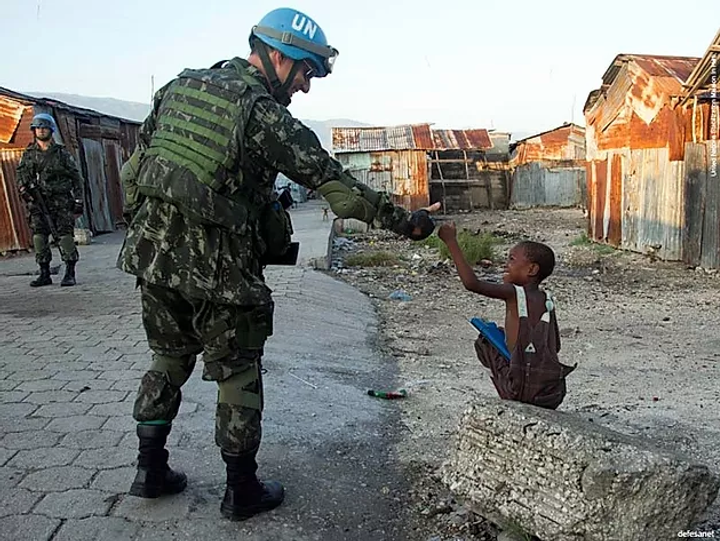
United Nations peacekeepers are increasingly being asked to choose between using force to protect civilians and abstaining from conflict in order to avoid legal prosecution. If the priority of these missions is to protect innocent lives from the devastations of war, several issues need to be addressed within UN peacekeeping.
In the long history of UN peacekeeping Missions, there have been many examples of peacekeepers not using force to protect civilians despite having UNSC authorisation. For example, the Security Council’s resolution (S/RES/794), which gave peacekeepers a chapter VII mandate to use force in Somalia. In this situation, the peacekeeping forces were authorised to use force in both the interest of self-defence, and to ensure the protection of a secure environment for humanitarian relief. However when it came to implementing their authorised mandate, UN Peacekeepers chose not to use force in the protection of civilians from local insurgent groups, which resulted in a high number of civilian causalities. Similarly, in July 2016 when the national security forces of South Sudan continued to commit atrocities, including mass rape and torture, against the local population, UN peacekeepers failed to intervene. Both of these cases highlight the apparent trepidation UN peacekeeping forces show when it comes to forcefully intervening in the interest of civilian protection. In fact, UN peacekeepers choose to use force in about 20 percent of cases where force is required for the protection of civilians. This is alarming as according to the UN peacekeeping department most of their security resolution sanctioned peacekeeping missions are in fact authorised to use force if civilians in the area come under threat. One main reason for UN peacekeeping’s failure, or inability, to use force is the number of peacekeepers deployed and their level of combat readiness. The number of UN peacekeepers in operation is close to 125,000, and they are currently divided across 16 active missions worldwide. In addition to this, many UN mission personnel are militarily ill equipped for instances where the use of force is required to protect civilians. The missions occur predominantly in nations we would term third world or failed states, and often the local combatants have access to illegally obtained military hardware, weapons, and arms that are more sophisticated than the meager armaments of UN peacekeeping missions.
After the physical practicalities of violence have been addressed, peacekeepers must also consider the real possibility of criminal prosecution if anything goes wrong in a physical confrontation with combatants. Under the current law, peacekeepers fear prosecution from both their home countries and the International Criminal Court in cases where using force results in civilian casualties or other unintended consequences. This legal barrier to effective civilian protection is one of the main challenges which needs to be resolved if UN peacekeeping missions are to be successful in protecting non-combatants in conflict zones. In cases of civilian casualties, peacekeepers can be prosecuted although they otherwise have diplomatic immunity in host states. As the immunity of peacekeepers applies only in the peacekeeping host states, it cannot prevent their prosecution at home. Due to this real risk of criminal prosecution most UN peacekeepers are reluctant to implement their mandated use of force, and are choosing to use it only in situations of self-defence.
The protection of civilians in states hosting UN peacekeeping missions should be the highest priority for peacekeepers. Unfortunately, the use of force, even when sanctioned by the UN is not being used due to these material and legal challenges.
The legal problems that arise due to jurisdictional boundaries over peacekeepers means that they could be held criminally responsible if they cannot prove the use of force is used to protect civilians or in self-defence. The troop number and weaponry logistics problems are also serious issues for peacekeepers who may not be as battle experienced as local combatants or as prepared for violence as is needed. Therefore, the weaponry of UN peacekeeping forces needs to be upgraded in order to be suitable for the task of stopping violent insurgents from attacking civilians. In addition, the legal framework covering UN peacekeeping forces need to be reformed in order to clarify the responsibility of peacekeeping forces in instances of conflict, and where and how they are responsible for the protection of civilians. Finally, the UN must make their responsibility to protect civilians during peacekeeping missions paramount, because the targeting of civilians in host states by insurgent groups is increasingly becoming the norm. If nothing is done to resolve these problems facing UN peacekeeping forces in hostile situations, the civilians will ultimately continue to be the group most affected by the outbreak of violence.
By Tareq Mahmood | ed. Joel Lindsay